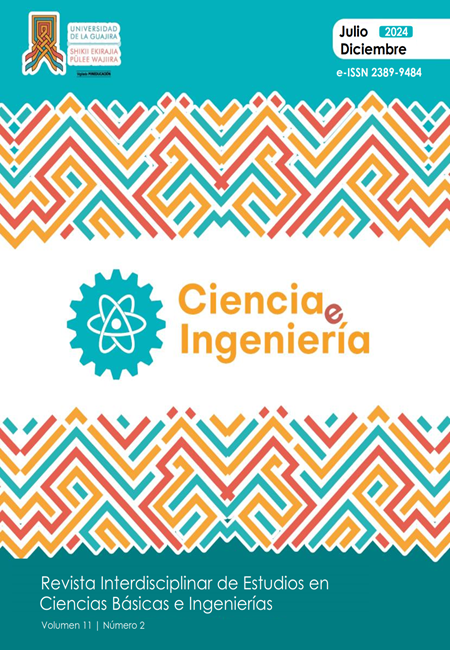Climate Risk Index: The measurement of climate change adaptation in Bogotá. A new methodology for largest urban agglomeration
DOI:
https://doi.org/10.5281/zenodo.12809587Keywords:
climate change adaptation, urban areas, climate risk assessmentAbstract
Densely Populated Cities, characterized by a high concentration of population and compact infrastructure, place them in a particularly vulnerable position to the effects of climate change, therefore, risk measurement becomes a fundamental tool to assess the capacity of cities to respond to these challenges and to develop effective adaptation and resilience strategies. For the purposes of Climate Change Adaptation in Bogota, the concept of Climate Risk Index-IRC is proposed as a quantitative approach that integrates a series of social, economic, environmental, infrastructure, etc., indicators available for Bogota that allow evaluating the components of climate risk (threat, exposure, sensitivity and adaptive capacity) in a differentiated manner in urban and rural contexts, considering the projected climate change in the variables temperature and precipitation to 2040.
Downloads
References
Amaya García, F., Sanchez Nuñez, M. L., Ramos, F. A., Puyana, M., Nunes De Palmer Paixão, I. C., Teixeira, V. L., & Castellanos, L. (2017). Dolabellane diterpenes from the Caribbean soft corals Eunicea laciniata and Eunicea asperula and determination of their anti HSV-1 activity. Rev. Colomb. Quím., 46(1), 5-12. doi:https://doi.org/10.15446/rev.colomb.quim.v46n1.62830
Arnfield, A. J. (2003). wo decades of urban climate research: A review of turbulence, exchanges of energy and water, and the urban heat island. International Journal of Climatology.
C40. (2018). CLIMATE CHANGE RISK ASSESSMENT GUIDANCE. C40.
IDEAM. (2017). Tercera Comunicación Nacional de Cambio Climático. Bogotá, Colombia: IDEAM.
IDEAM. (2021). http://www.ideam.gov.co. Recuperado el 2021, de http://www.ideam.gov.co/documents/21021/418894/Caracter%C3%ADsticas+de+Ciudades+Principales+y+Municipios+Tur%C3%ADsticos.pdf/c3ca90c8-1072-434a-a235-91baee8c73fc
IDIGER. (2018). Plan Distrital de Gestión del Riesgo de Desastres y Cambio Climático-PDGRDCC 2018-2030. Bogotá: Decreto Distrital 837 del 28 de diciembre de 2018.
IPCC. (2014). Climate Change 2014: Synthesis Report. Contribution of Working Groups I, II and III to the Fifth Assessment Report of the Intergovernmental Panel on Climate Change IPCC. Geneva, Switzerland: IPCC.
IPCC, G. I. (2007). Cambio climático 2007- informa de síntesis. Contribución de los Grupos de trabajo I, II y III al Cuarto Informe de evaluación del Grupo Intergubernamental de Expertos sobre el Cambio Climático. Bogotá.
Rowland, E. L. (2011). Approaches to evaluating climate change impacts on species: a guide to initiating the adaptation planning process. (47, 322–337 (2011).).
SDA-IDIGER. (2020). Plan de Acción Climática. Bogotá: Alcaldía Mayor de Bogotá.
UNDRR. (2017). Disaster risk Terminology. United Nations Office for Disaster Risk Reduction.
Voogt, J. A. (2003). Thermal Remote Sensing of Urban Climates. Remote Sensing of Environment, 370-384.
Published
How to Cite
Issue
Section
License

This work is licensed under a Creative Commons Attribution-NonCommercial-NoDerivatives 4.0 International License.





